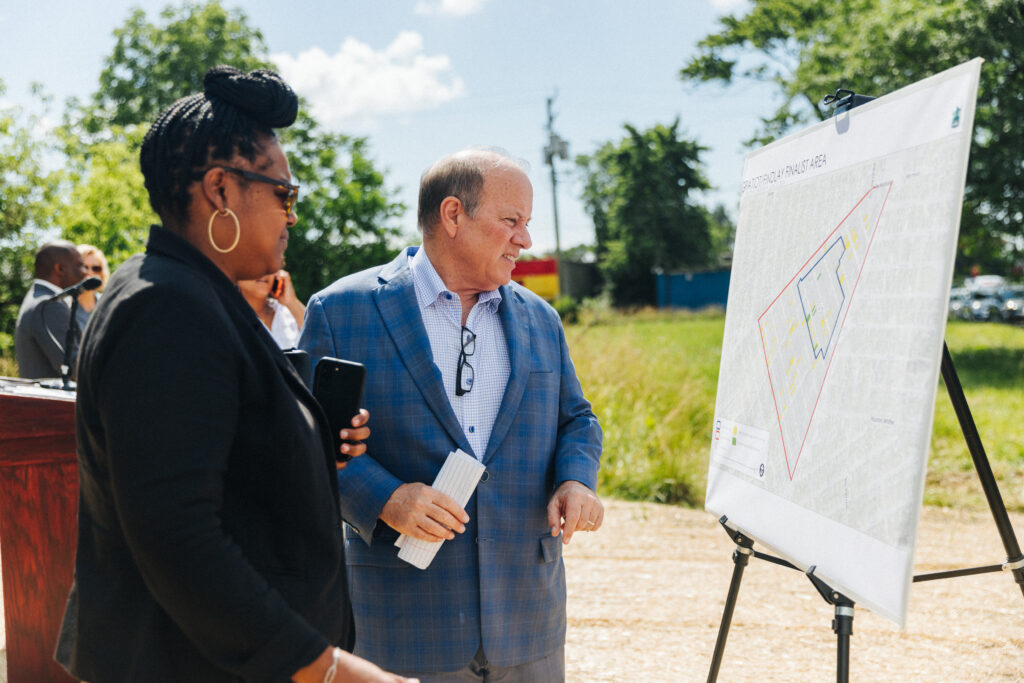The City of Detroit is undertaking a lucrative new grift. The “Solar Neighborhoods” program, which intends to buy up vacant lots in run-down neighborhoods, bulldoze the remaining houses, and install solar panels to power municipal buildings.
It sounds like a virtuous goal, but like many supposed green-energy programs, the motives become suspect when you look into it.
At the most basic level, this is a way for the city to use “voluntary buyouts” and eminent domain condemnations to acquire land in the city. Within the target areas so far, most homeowners have opted to take the city’s offer, $90,000 minimum or double the assessed market value of the property. Renters are given a few months rent to vacate. Roughly 10% of the properties are vacant, and the city is currently waging at least 89 lawsuits to acquire them through eminent domain.
On acquiring the properties, Mayor Mike Duggan stated, “We have seen property values and income tax revenues grow dramatically in other neighborhoods where the city has made investments. I’m confident our $1.1 million a year investment in these long-forgotten neighborhoods will produce a real recovery in these communities.”
Let’s read between the lines here: The city is buying up vacant property, forcing out residents, and expecting the value to increase considerably once they develop it. They’re trying to play the role of property developer. Cosplaying as private equity using federal funding and tax credits.
No moral judgment, just a plain fact. Development is usually a good thing, and who doesn’t want Detroit to get nicer, for property values to rise, for standards of living to increase? Yet what’s dubious is the idea that solar development will play any role in that. Once the solar panels degrade over 35 years (or sooner, who can trust the Chinese manufacturers’ estimates?), these will be fields of dead panels, expensive to remove and costly to develop.

According to the agreement, the solar field developers are supposed to return the fields to the city as green lots, with the panels removed, after 35 years. But who knows what will happen before then? There’s no guarantee they’ll honor the agreement, or even that the developers will be around and solvent by then. One bankruptcy, and those panels are there forever.
You can fast forward a few decades and imagine the outcome—empty Detroit lots, dead solar panels left to rot, overgrown with weeds and grass. Cyberpunk green-energy dystopia. Hipster film photographers, if they’re still around, will love it.
Hell, picture it even at its peak and it’s bad science fiction. Fields of gleaming solar panels and electric cables, surrounded by abandoned houses and empty lots. Trading one form of blight for another. Solar panels will do nothing to improve these neighborhoods and bring new development. They don’t spend money or contribute to the culture—people do, and these are, in the end, just more expensive shiny vacant lots.
The city is partnering with not one, not two, but 14 different nonprofit organizations on this development. They’re all the same thing: Organizations that exist to suckle at the government teat, to fund themselves with the slew of federal green-energy funding trickling down the pipeline. They all claim noble-sounding missions, like “developing environmentally friendly, net zero spaces for community-based organizations that specifically impact BIPOC (Black, Indigenous, People of Color) and LMI (Low to Moderate Income) communities.”
They all have 10 or so employees, a CEO in a suit, and lots of vague language about solar development programs for urban communities. Translation: getting that sweet, sweet grant money. The nonprofit game can be a great grift. For anyone who’s been in it, you know the score. You’re grant writers, primarily, and there’s little accountability once you land a grant. The goal is to keep the money flowing, keep the direct deposits hitting, and whatever altruistic aim you claim you’re after beyond that is secondary.
Let’s look at the broader numbers here, too. The city is spending $14 million to acquire the land alone. The nonprofits are crucial to ease the land acquisitions, aiding the city in meeting with homeowners and disseminating pro-solar propaganda to the local residents. They’re then leasing the land to solar developers, including DTE and Lightstar Renewables. The electric companies will install the panels and plug them into the grid. Supposedly, this will save taxpayers money, powering the city’s municipal buildings with solar power at half the current rates.
There’s no guarantee of this, of course. Electrical rates are notoriously fickle. Just ask anyone who’s paid their electric bill in the past year. Solar development is costly, and in the long run, there’s no guarantee of tax savings. Especially if the cost to secure and maintain these properties goes up, not down, in the long run.
The city already spends over $2 million a year just to maintain these neighborhoods, with police and mowing the grass and such. They estimate those costs will more than double to over $4 million to run and maintain the solar fields. The city projects they’ll cover $3 million of that with reduced energy costs and renewable energy savings.
These are just projections, of course, and when was the last time financial projections of new development in America didn’t vastly exceed estimates?
The city risks pouring millions of dollars into an expensive boondoggle, with no guarantee of return and the potential for waste and grift at every angle. Powering the city buildings with solar is an infinitesimal drop in the bucket in the overall energy landscape and serves more as a political symbol than anything truly impactful. Energy innovation is crucial and sorely needed, but not with programs like this that really only exist to funnel federal money into a few dozen pockets and advance the careers of politicians.
There’s no sea change here for Detroit, no rejuvenation of urban decay, just virtue signaling and cashing checks.
Bobby Mars is an artist, alter ego, and former art professor. Follow him on X @bobby_on_mars.




